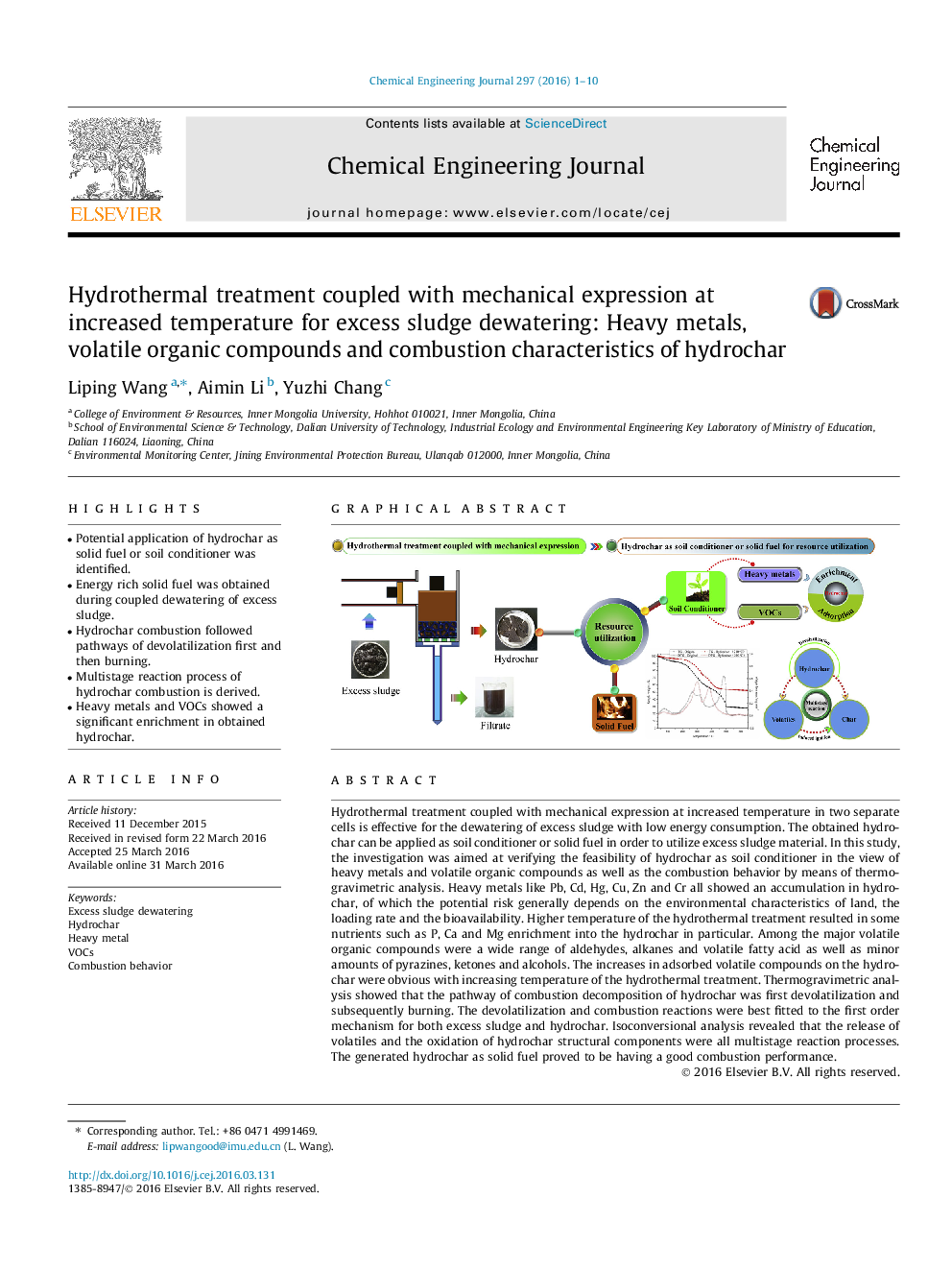| Article ID | Journal | Published Year | Pages | File Type |
|---|---|---|---|---|
| 145562 | Chemical Engineering Journal | 2016 | 10 Pages |
•Potential application of hydrochar as solid fuel or soil conditioner was identified.•Energy rich solid fuel was obtained during coupled dewatering of excess sludge.•Hydrochar combustion followed pathways of devolatilization first and then burning.•Multistage reaction process of hydrochar combustion is derived.•Heavy metals and VOCs showed a significant enrichment in obtained hydrochar.
Hydrothermal treatment coupled with mechanical expression at increased temperature in two separate cells is effective for the dewatering of excess sludge with low energy consumption. The obtained hydrochar can be applied as soil conditioner or solid fuel in order to utilize excess sludge material. In this study, the investigation was aimed at verifying the feasibility of hydrochar as soil conditioner in the view of heavy metals and volatile organic compounds as well as the combustion behavior by means of thermogravimetric analysis. Heavy metals like Pb, Cd, Hg, Cu, Zn and Cr all showed an accumulation in hydrochar, of which the potential risk generally depends on the environmental characteristics of land, the loading rate and the bioavailability. Higher temperature of the hydrothermal treatment resulted in some nutrients such as P, Ca and Mg enrichment into the hydrochar in particular. Among the major volatile organic compounds were a wide range of aldehydes, alkanes and volatile fatty acid as well as minor amounts of pyrazines, ketones and alcohols. The increases in adsorbed volatile compounds on the hydrochar were obvious with increasing temperature of the hydrothermal treatment. Thermogravimetric analysis showed that the pathway of combustion decomposition of hydrochar was first devolatilization and subsequently burning. The devolatilization and combustion reactions were best fitted to the first order mechanism for both excess sludge and hydrochar. Isoconversional analysis revealed that the release of volatiles and the oxidation of hydrochar structural components were all multistage reaction processes. The generated hydrochar as solid fuel proved to be having a good combustion performance.
Graphical abstractFigure optionsDownload full-size imageDownload as PowerPoint slide
